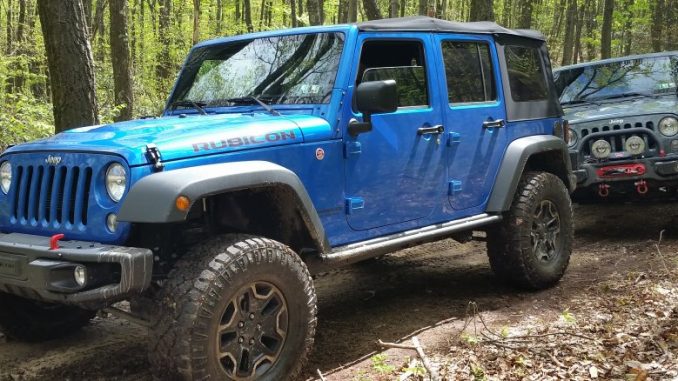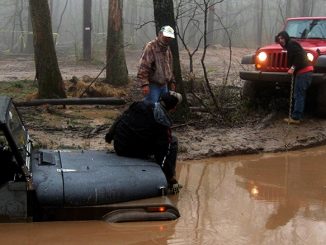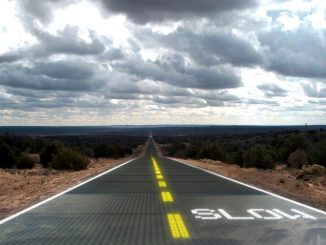
The following are some general offroad driving techniques that are used in all types of terrain. These general tips can help to improve your ability to navigate safely and efficiently.
Safety & Hand Position
When driving off road, your safety should be your number one priority. Nothing spoils the fun like someone getting hurt, yourself including. So here are a few basic safety tips that can help keep the fun going. First, it’s been said before and it’ll be said again, buckle up. When offroad, there are so many opportunities for the un-expected to happen. Rollovers, wet brakes, sudden stops, the list goes on. So play it safe and put that belt on. Another tips has to do with your hand position and the steering wheel. It’s important not to place your thumbs on the inside of the steering wheel. When driving offroad, ruts, potholes, rocks, hidden objects in mud, etc, all can cause the the wheel to suddenly turn. A sudden jerk of the wheel can cause the spokes of the wheel to whip around resulting in the thumb being bruised, dislocated or even broken if it is left inside the wheel. Make it a habit to keep your thumbs safely on the outside of the steering wheel where they are out of harms way. Consciously done often enough and it should become second nature to you. Today with power steering, this technique is not as important at it once was when manual steering was more common and steering stabilizers were rare. Still with today’s higher horsepower engines and more gun-hoe driving styles, it’s a good idea to think of the thumbs and save them from the force at which the steering wheel turns when hitting an obstruction. This technique also helps save the thumbs when harsh bumps or accidents are encountered and you are jerked forward. With the thumb on the outside, it again is not bent backwards.
Choosing Your Line
A common term used in offroad driving is “line”. The “line” is the approach and path that you take through an area in over and around obstacles. This path should take into consideration several factors. You are considering your best path to avoid damage and maintain traction to get over, around or through whatever you are negotiating. You are taking into consideration your undercarriage which includes your differentials, axle tubes, suspension, lower shock towers, your oil pan, transmission pan, exhaust, drive shafts, lower fenders, spare tire, anything that hangs down and can hang you up or suffer damage. The idea is to think ahead and imagine the vehicle driving through the path you intend to take BEFORE you try it. This approach helps you to plan your way through obstacles while minimizing damage and keeping your momentum.
Sometimes it is difficult to navigate your line of choice yourself because it can be hard to see everything around your vehicle from the driver seat. This is where the help of a “spotter” can be quite valuable. A spotter would be someone standing outside of your vehicle watching your path and providing direct to you, both verbally and through use of hand signals. A spotters job can be what makes or breaks a run through an obstacle course. Describing what makes a good spotter can be difficult but you know when you have a good spotter. It’s also good to note that you are better served by one good spotter carefully guiding your vehicle through a line rather than a whole group of “wanna be” spotters shouting out directions.
Braking Tips
With manual transmission vehicles, there are time when you are descending down a hill and attempting to control your rate of speed by applying the brakes. Another method for controlling speed is to put the vehicle in a low gear such as 1st gear in low range and let the clutch out. Stay off the gas and brake and let the engine do the braking. This works by putting vehicle in a gear that will spin the tires slower at an engine idle than you want to go. The effect is the engine slows the tires down. The benefit of engine braking is you are controlling the wheel spin at a fixed rate of speed. This fixed rate of speed increases traction on a hill descent or during cornering allowing you to maintain control of the vehicle. Brakes can still be applied if necessary to slow the vehicle further. The opposing method of 100% braking (rather engine braking) means that you are applying stopping force which may lock up a wheel causing a loss of traction and consequently a loss of control. Engine braking is an advantage that manual transmission have over automatic transmissions.
Another tip that deals with braking applies to slowing a vehicle suddenly during trail riding. If you are slowing suddenly, lets say to avoid slamming into a rock or a pothole, here is a method for preserving your suspension components. When applying a vehicle’s brakes hard, your vehicle’s weight is shifted forward onto the front suspension. This causes the front suspension to compress. When your suspension is compressed, it has used up most of the suspensions travel leaving very little for absorbing the impact you are about to encounter. In these situations if you cannot stop in time, try releasing the brakes just before impacting the obstacle (pothole, rut, rock, etc). This will allow the front suspension to return to its normal height and give more suspension travel to absorb the impact when you actually hit the obstacle.



